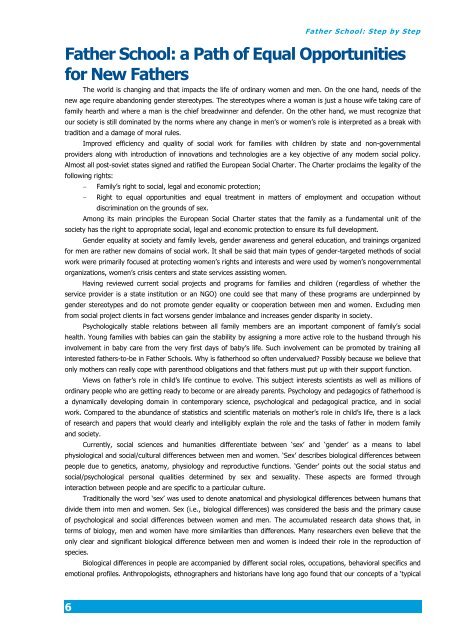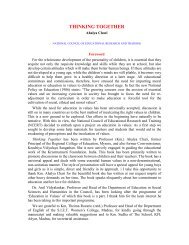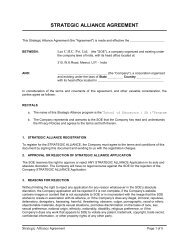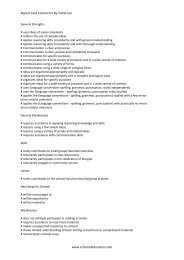Father <strong>School</strong>: S tep by StepFather <strong>School</strong>: a Path <strong>of</strong> Equal Opportunitiesfor New FathersThe world is changing and that impacts the life <strong>of</strong> ordinary women and men. On the one hand, needs <strong>of</strong> thenew age require abandoning gender stereotypes. The stereotypes where a woman is just a house wife taking care <strong>of</strong>family hearth and where a man is the chief breadwinner and defender. On the other hand, we must recognize thatour society is still dominated by the norms where any change in men’s or women’s role is interpreted as a break withtradition and a damage <strong>of</strong> moral rules.Improved efficiency and quality <strong>of</strong> social work for families with children by state and non-governmentalproviders along with introduction <strong>of</strong> innovations and technologies are a key objective <strong>of</strong> any modern social policy.Almost all post-soviet states signed and ratified the European Social Charter. The Charter proclaims the legality <strong>of</strong> thefollowing rights:Family’s right to social, legal and economic protection;Right to equal opportunities and equal treatment in matters <strong>of</strong> employment and occupation withoutdiscrimination on the grounds <strong>of</strong> sex.Among its main principles the European Social Charter states that the family as a fundamental unit <strong>of</strong> thesociety has the right to appropriate social, legal and economic protection to ensure its full development.Gender equality at society and family levels, gender awareness and general education, and trainings organizedfor men are rather new domains <strong>of</strong> social work. It shall be said that main types <strong>of</strong> gender-targeted methods <strong>of</strong> socialwork were primarily focused at protecting women’s rights and interests and were used by women’s nongovernmentalorganizations, women’s crisis centers and state services assisting women.Having reviewed current social projects and programs for families and children (regardless <strong>of</strong> whether theservice provider is a state institution or an NGO) one could see that many <strong>of</strong> these programs are underpinned bygender stereotypes and do not promote gender equality or cooperation between men and women. Excluding menfrom social project clients in fact worsens gender imbalance and increases gender disparity in society.Psychologically stable relations between all family members are an important component <strong>of</strong> family’s socialhealth. Young families with babies can gain the stability by assigning a more active role to the husband through hisinvolvement in baby care from the very first days <strong>of</strong> baby’s life. Such involvement can be promoted by training allinterested fathers-to-be in Father <strong>School</strong>s. Why is fatherhood so <strong>of</strong>ten undervalued? Possibly because we believe thatonly mothers can really cope with parenthood obligations and that fathers must put up with their support function.Views on father’s role in child’s life continue to evolve. This subject interests scientists as well as millions <strong>of</strong>ordinary people who are getting ready to become or are already parents. Psychology and pedagogics <strong>of</strong> fatherhood isa dynamically developing domain in contemporary science, psychological and pedagogical practice, and in socialwork. Compared to the abundance <strong>of</strong> statistics and scientific materials on mother’s role in child’s life, there is a lack<strong>of</strong> research and papers that would clearly and intelligibly explain the role and the tasks <strong>of</strong> father in modern familyand society.Currently, social sciences and humanities differentiate between ‘sex’ and ‘gender’ as a means to labelphysiological and social/cultural differences between men and women. ‘Sex’ describes biological differences betweenpeople due to genetics, anatomy, physiology and reproductive functions. ‘Gender’ points out the social status andsocial/psychological personal qualities determined by sex and sexuality. These aspects are formed throughinteraction between people and are specific to a particular culture.Traditionally the word ‘sex’ was used to denote anatomical and physiological differences between humans thatdivide them into men and women. Sex (i.e., biological differences) was considered the basis and the primary cause<strong>of</strong> psychological and social differences between women and men. The accumulated research data shows that, interms <strong>of</strong> biology, men and women have more similarities than differences. Many researchers even believe that theonly clear and significant biological difference between men and women is indeed their role in the reproduction <strong>of</strong>species.Biological differences in people are accompanied by different social roles, occupations, behavioral specifics andemotional pr<strong>of</strong>iles. Anthropologists, ethnographers and historians have long ago found that our concepts <strong>of</strong> a ‘typical6
Father <strong>School</strong>: S tep by Stepman’ or ‘typical woman’ are rather conventional. Occupations (behavior, character traits) considered ‘masculine’manifestations in one society can be considered ‘feminine’ in the other.The diversity <strong>of</strong> social dimensions for women and men around the world versus the fundamental similarity <strong>of</strong>their biological parameters allows concluding that a biological sex is not the true ground for different social rolesexisting in different societies. This conclusion leads to defining ‘gender’ as a sum <strong>of</strong> social and cultural normsexpected <strong>of</strong> people in a society based on the biological sex.So, at the end, psychological qualities, behavior patterns, occupations and feminine/masculine pr<strong>of</strong>essions aredetermined by social and cultural norms rather than biological specifics. To be a man or to be a woman in a societymeans (in addition to having anatomic particulars) to perform certain gender-prescribed roles.The contemporary gender theory does not deny the existence <strong>of</strong> biological, social and psychological differencesamong women and men. The theory simply states that the difference per se is less important than the social valueand interpretation <strong>of</strong> such differences and the power sharing system constructed around them. The gender approachis based on the concept that biological and physical differences between men and women are important not bythemselves but due to the cultural and social weight attached to the differences. Gender research primarily analysespower and domination in the society achieved through gender roles and relations. Describing the specifics <strong>of</strong> thestatus, roles and other aspects in lives <strong>of</strong> men and women is <strong>of</strong> secondary importance. Gender approach declaresachieving gender equality (or balance) <strong>of</strong> the roles and relations as its goal.Contemporary gender psychology studies the distribution and the balance <strong>of</strong> ‘male’ and ‘female’ roles in familyand society and tries to answer questions about motherhood and fatherhood in a modern society.Gender equality ideas are most developed and widely spread in Sweden, Norway, Denmark and theNetherlands. Gender equality principles are actively implemented at public institutions throughout Europe and NorthAmerica. Whether gender approaches are acceptable and useful at institutions <strong>of</strong> former Soviet republics is a subject<strong>of</strong> a heated public debate. Here the supporters <strong>of</strong> the classical ‘orthodox’ family model where farther leads anddominates the family strongly disagree with the promoters <strong>of</strong> the ‘postclassical’ egalitarian model that welcomesequality <strong>of</strong> and flexibility in father's and mother’s roles in family and society.Studies <strong>of</strong> father’s role in children’s life were performed from the beginning <strong>of</strong> the psychological science.Prominent authorities in psychology including Sigmund Freud, Carl Gustav Jung, Karen Horney, Alfred Adler, EricBerne and others paid a great attention to father’s role. Alfred Adler, the founder <strong>of</strong> humanistic psychology,underlined father’s importance in developing a social interest in the child. In his opinion, an ‘ideal’ father treats hischildren as equals and is actively involved (alongside his wife) in children’s upbringing. Fathers shall avoid makingtwo mistakes, i.e., an emotional withdrawal and a parental authoritarianism. These mistakes cause distortions in thedevelopment <strong>of</strong> a balanced personality; such children learn to defend their egoistic personal interests and ignoresocial interests, norms and rules.The influence <strong>of</strong> fathers onto early children development is scientifically proven. Many studies had shown thatfathers who held their babies right after the birth keep playing with them more <strong>of</strong>ten afterwards and spend moretime together as they grow. It was also established that babies <strong>of</strong> close and active fathers achieved higher scores inmental and motor development; they also grow to be more socially sensitive. Another important discovery concernedconjugal relations which were found to be significantly more harmonious, pursued shared objectives and plans, andexhibited a low proneness to conflicts.A distinguished scientist Grace J. Craig noticed that fathers who established strong emotional bonds with theirinfants had a higher sensitivity to the changing interests and needs <strong>of</strong> their growing children. These dads exert moreinfluence on their <strong>of</strong>fsprings who willingly listen to and want to imitate their fathers thanks to intimate relationsbased on trust. Developmental crises are less pronounced in such children and less painful for their family andsociety.A direct positive influence on a young child by a caring farther is usually accompanied by an indirect beneficialimpact on the baby and the family. Multiple studies have shown the importance <strong>of</strong> father’s support to his spouseduring and after her pregnancy in establishing positive relations in the whole family. In the triangle <strong>of</strong> family contacts(mother – father – child) mother primarily has a direct impact. However, fathers influence both directly and indirectly(through mothers).Large scale studies <strong>of</strong> fatherhood were organized in the USA in 1970-90s. Some <strong>of</strong> researchers concluded thatfathers could deliver a full baby care except for breastfeeding. They are able to swaddle, to rock and to feed infants7
















